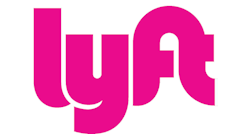Filling the Commuter Gap Between Home and Rail Stations
In recent years, commuter rail systems around the country have seen growing ridership, showing the strong appetite among consumers for the reliability of trains as a substitute for the tedium of sitting in traffic. But for many Americans, the nearest train station is too far from home to allow a carless commute, causing parking congestion at stations and preventing many drivers from choosing transit.
While buses, walking, and cycling help solve the last-mile problem for some, many suburban commuters must travel several miles to access a station, making those options impractical.
Lyft is actively partnering with transit agencies around the country to fill this gap, enabling more commuters to give up their cars entirely and taking pressure off of congested train station parking lots.
In Colorado, we’re working with the city of Centennial and Denver RTD on a pilot to provide residents and workers with free (grant-subsidized) Lyft rides to and from a suburban light rail station. RTD estimates that the passenger subsidies will cost less than the agency’s current costs for its own Call-n-Ride bus operations, while greatly improving response times for customers.
And in Portland, Lyft recently launched a partnership with TriMet to integrate real-time Lyft availability and pricing information directly into the TriMet Tickets app, enabled by moovel’s RideTap. By surfacing Lyft information in the same app where riders buy transit tickets, this partnership reduces friction for multimodal travelers, encouraging commuters to leave their cars at home. Lyft’s API makes integrations like this easily available to any agency to customize for its own digital platforms. Other similar examples include our integrations in the Xerox Go LA and Go Denver trip planning apps, and with DART’s GoPass app in Dallas.
The next wave of Lyft’s first-last mile transit partnerships will likely see even deeper integration between Lyft and transit fare systems, expanding access for the unbanked and extending Lyft’s network to those without smartphones, Meanwhile, agencies may begin to reimagine the physical design of stations for less parking and easier pickups and dropoffs. We welcome creative partnership concepts from transit agencies large and small, as we work together to bring convenient, affordable mobility to all Americans.
Emily Castor, Director of Transportation Policy, Lyft, San Francisco, Calif.


